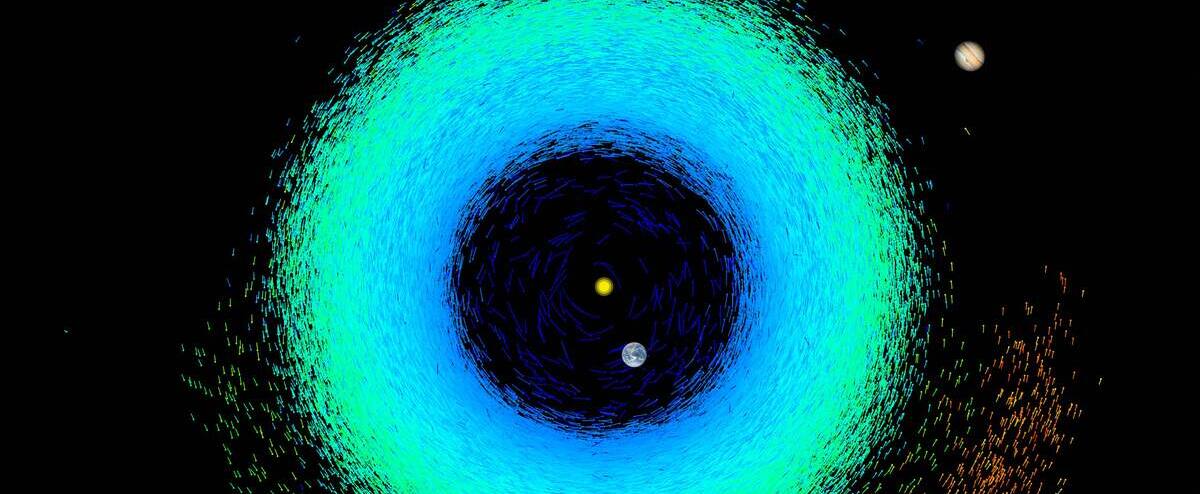Astronomers feel dizzy: The Gaia Space Telescope presented its new data on nearly two billion stars in the Milky Way on Monday, with incredible resolution that makes it possible to map our galaxy, full of life.
• Read also: The discovery of water around an exoplanet was called into question
“It is a wonderful day for astronomy, which opens the door to new discoveries about the universe and our galaxy,” Jozef Asbacher, Director General of the European Space Agency (ESA) rejoiced while presenting the Gaia findings, one of the agency’s most important scientific findings. Launched in 2013.
The space observatory, positioned 1.5 million kilometers from Earth opposite the Sun, is in its third harvest of data, and aims to map our galaxy in all its dimensions, and thus understand its origin, structure and dynamics.
Equipped with two telescopes and a photographic sensor with a billion pixels, Gaia is scanning a tiny fraction (barely 1%) of the stars in our galaxy, which is 100,000 light-years across.
The numbers revealed on Monday are unfathomable: by analyzing 700 million data sent to Earth every day, for a period of 34 months, Gaia has been able to provide information about more than 1.8 billion stars.
“Patachion Life”
An array of unprecedented details, such as 220 million photometric spectra, is being introduced, which will make it possible for the first time to estimate the mass, colour, temperature and age of stars. And 2.5 million new chemical combinations, this “DNA” provides information on where stars are born, and their journey through the galaxy.
or 35 million radial velocities, which measures the displacement of stars and provides a new understanding of the motions of the Milky Way.
Surprise for scientists: Gaia first observed stellar “tremors”, small movements on the surface of a star that changed its shape. This discovery opens a “gold mine of ‘stellar’s’ for massive stars”, that is, their inner workings, explained Connie Aerts of the University of Louvain (Belgium), a member of the Gaia Collaboration.
“At all levels, Gaia exceeds expectations,” says François Menard, Scientific Director of the Gaia Expedition in France.
The findings, which have led to about fifty scientific articles in the process, paint a picture of a galaxy “much more turbulent” than expected, an astronomer at the Azure Coast Observatory said. , swirls gently on its own, like a liquid being gently stirred with a wooden spoon. But not at all! Francois Maynard develops.
On the contrary, the “life of Batachun” consists of accidents and unexpected movements and is not so simple” as this spiral you describe. For example, our solar system “does not just rotate in a vertical plane, it goes up and down, up and down,” he identifies Francois Maynard.
“The Crucible Star”
It is also home to a very heterogeneous group of stars, some of which did not exist from the start but may have been “swallowed” along the way through interactions with the nearby dwarf galaxy Sagittarius.
“Our galaxy is a wonderful melting pot of stars,” sums up Alejandra Recio Blanco of the Observatory of the Cote d’Azur.
Gaia’s level of accuracy “will allow us to trace the past of the Milky Way over more than 10 billion years,” added Anthony Brown, president of DPAC, the terrestrial processing series of data streams sent from Gaia.
Stars have the peculiarity of life for billions of years: analyzing them is equivalent to studying a fossil, informing us of the state of the galaxy during its formation, and this is confirmed by astronomers.
With the second catalog, delivered in 2018, astronomers were able to show that our galaxy “merged” with ours another ten billion years ago.
The new catalog also presents unparalleled precision measurements of 156,000 asteroids in our solar system, breaking apart a combination of 60,000 of them.
It will take five years to deliver this third catalog of observations from 2014 to 2017. And it will be necessary to wait until 2030 for the final version, when Gaia will finish scanning the space, in 2025.

“Proud thinker. Tv fanatic. Communicator. Evil student. Food junkie. Passionate coffee geek. Award-winning alcohol advocate.”








